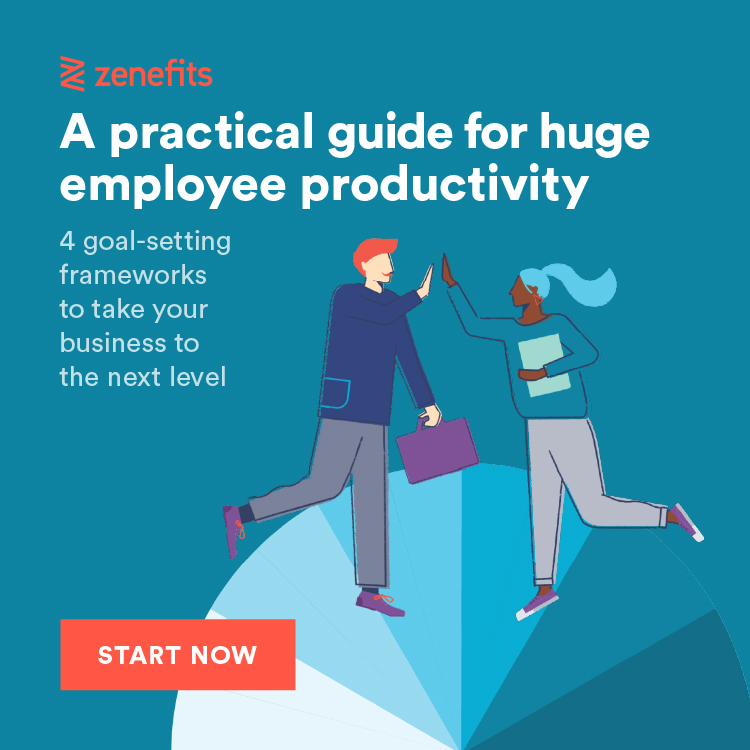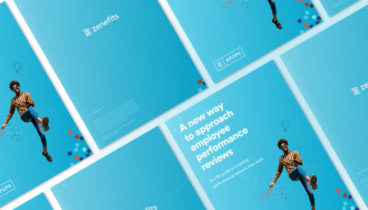Supporting and facilitating professional development allows team members to work at their maximum potential. Here are ways to support employee growth.

Here's what you need to know:
-
As team members grow in their careers, they significantly impact the company they work for
-
Some employees take responsibility for their own professional growth, and others may need help embracing career development
-
Management can create a stronger team by empowering employees through professional development
Top performers don’t just magically appear. They learn and grow as part of their career commitment. Every new experience, skill, success, and failure is a teaching moment that allows workers to overcome challenges, create, innovate, and make lasting impacts on their team and organization.
Companies should encourage career advancement. Supporting and facilitating professional development allows team members to work at their maximum potential. Management can create a stronger team by empowering employees through career development.
Why is employee professional development significant?
An investment in employee development is an investment in growth and advancement. As team members grow in their careers, they significantly impact the company they work for.
How can supporting career growth benefit a business?
Let’s look at exactly how offering career development and supporting employees’ growth can benefit your business.
Increased employee engagement
Employees who remember speaking to their manager about career goals within the last 6 months are more likely to be engaged than those who haven’t had the same type of conversation.
Improved employee retention
Career progression is the number 1 reason for job hunting during the Great Resignation. Of employees who receive promotions, approximately 75% of workers stay with the same company for at least 3 years. About 94% of workers said they would remain with a company if their employer invested in their careers.
Attracting top performers
Currently, there are 2 job openings for every unemployed worker, so there is tremendous competition for top-performing talent. Most who are seeking employment are motivated by the potential for career progression.
Prepare teams for the future job climate
In 1940, most of today’s jobs didn’t exist. Many of the jobs that will be available in 10 years haven’t been invented yet. Companies that support career development and advancement help their teams prepare to maintain or obtain jobs as the job-seeking market changes.
Provide a better employee experience
Companies that invest in their employees’ growth potential help them feel supported and valued, thereby improving satisfaction ratings and the overall employee experience.
Improved diversity, equality, inclusivity, and belonging
Companies that support employee career growth can develop talent from underrepresented groups within their organization, building diversity within their skilled internal talent pool.
6 ways to support employee career growth
Some employees take responsibility for their own professional growth. They read blog posts, enroll in classes, watch webinars, or even hire career coaches.
Other employees may need help embracing career development. They may need assistance finding the time, covering costs, or trusting their own career ambitions.
Here are 6 ways management can support professional development and career paths for their teams.
1. Create a learning culture
Management can better support employee professional growth when all team members know that learning and development (L&D) is celebrated, encouraged, and prioritized. That’s why facilitating a learning culture is essential.
Companies should incorporate learning and growth into their core values. Those values should shine in business decisions and people strategies. Managers should discuss career growth options with employees, during recruitment and employee onboarding and through to one-on-ones and performance reviews.
Reinforce company values regarding learning and growth through rewards, recognition, promotions, and role-based compensation.
Organizations should encourage their teams to use time during the workday for learning activities and then share what they’ve learned with other team members. Reinforce company values regarding learning and growth through rewards, recognition, promotions, and role-based compensation.
Encouraging a learning culture allows employees to grow in their current positions and achieve upward mobility within the company.
2. Build employee career paths
Helping employees build their career paths allows them to visualize their future within an organization and see the actions they should take to reach their goals. HR can use onboarding to learn about an employee’s career goals.
In response to the stated objectives, the HR professional can assist in developing a career path. HR can use the employee’s skills, education, experience, and other qualifications needed to reach each goal and develop a plan for achieving the employee’s ultimate goals.
Building a career path works best in tandem with succession planning. Succession planning is when the company identifies the most crucial positions, both now and in the future, for which high-performing employees could successfully acquire the skills.
When companies combine succession planning and professional development, it helps team members set goals to advance their careers within their current organization.
3. Deliver continuous performance management
Performance management is not simply a once-a-year progress report filed in a personnel file. Instead, it should be a continuous process. Managers and employees should discuss progress toward goals during regular one-on-one meetings. During the meetings, the career path should be reviewed to ensure the employee stays on track.
As management reviews career goals with employees, they should also discuss how those goals align with potential advancement within the company. These meetings are the time to adjust plans to address new priorities or any challenges the employee faces.
4. Offer multiple career development opportunities
Everyone has their own learning style. One person may want to complete an entire workshop, while another may prefer shadowing a more experienced team member to learn their job.
Live speakers and conferences may be ideal for 1 team member. At the same time, others may prefer a recorded webinar that they can pause and rewind to allow for more comprehensive note-taking.
Most learners need various learning opportunities because they may learn differently in different situations. Management should offer multiple career growth opportunities that make sense for both the employee and the company.
5. Provide rewards and recognition
Career advancement doesn’t happen overnight. When a team seems to be stalled, they can often be encouraged and motivated to continue by managers recognizing their progress and rewarding them.
Recognition can occur during one-on-one sessions and all-hands meetings where management or supervisors can highlight learning and development achievements. HR should create a compensation strategy and budget that allows a financial reward for employees as they increase their work-related skill set and education.
Recognition and rewards emphasize the company’s value on career growth. They also show the support management can be expected to provide for achieving career development goals.
6. Offer career advancement
If an employee puts in the work toward professional development, the company should reward them. Over time, that reward is career advancement. Working toward career advancement within the company helps team members maintain their commitment to reaching their goals. Sometimes advancement comes in the form of promotion.
Other times, it comes in the form of moving laterally within the company to place the employee in a position that they think will bring them more job satisfaction.
Creating an open environment for learning benefits everyone
Management can facilitate employee growth and development by creating an open environment for learning. They can further encourage learning, development, and growth by providing recognition and rewards for progress. Continuously moving toward professional goals includes adjusting the path or updating the plan to ensure their place is secured within the organization’s development.







